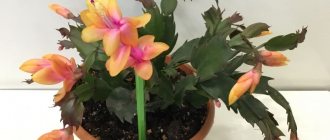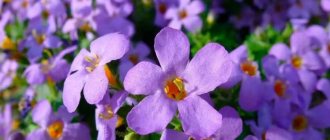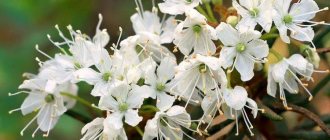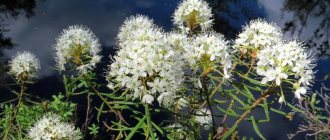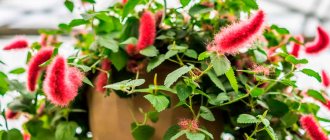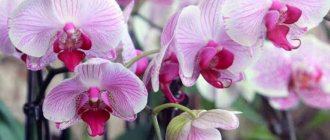One of the most modest, sophisticated and delicate flowers is undoubtedly Galanthus or, in other words, snowdrop. Its name is translated from Greek as “milk flower”. It blooms one of the first in early spring, bowing the light heads of the buds, when the last snow has not yet completely melted. It seems that the bell flowers are about to sink even lower to the ground and ring with a clear iridescence. This is a real fragile decoration of any garden or alpine hill. Therefore, if you want to grow galanthus yourself, we have prepared the latest and most relevant information about its care, planting and cultivation features.
General information
Snowdrops, photos of which are presented in our material, are herbaceous perennials. Their scientific name is galanthus, which translated from ancient Greek means “milky-flowered.” They belong to the amaryllis family. There are at least 18 species in total, not counting hybrids.
Because of their delicate color, in England the flowers have the poetic name “snow catkins”, and in Germany – “snow bells”. The name given to snowdrops in Russia is due to the fact that they appear very early, even before the snow has completely melted.
Snowdrops are listed in the Red Book because they are at risk of extinction. However, they have received great recognition as ornamental plants. Flower growers grow them in gardens. Terry forms are extremely popular.
There are many legends about snowdrops. According to one of them, these flowers appeared on Earth a very, very long time ago. This happened when Adam and Eve left Eden. It is snowing. Eva, frozen, began to cry. To console her, the Creator turned several snowflakes into delicate flowers.
Feeding
Perennial garden primrose
While the snowdrop is actively growing, it needs liquid fertilizing with inorganic potassium phosphate fertilizers without nitrogen, which can cause excessive leaf growth. Potassium is needed for the formation of healthy winter-hardy bulbs, and phosphorus is necessary for flowering. Active growth requires a lot of water. Usually watering is not needed, but if suddenly the spring is dry, then the grower will have to provide the plant with moisture. Watering small bulbous plants is not burdensome - they are very resistant to drought and will not die, but will not be tall. No maintenance is required until the end of the season.
So, easy care of the unpretentious plant will bring joy to gardeners and preserve the snowdrop. The Red Book is needed as a document that controls its protection.
Caucasian snowdrop is a type of bulbous plant that is listed in the Red Book and is carefully protected by the state. The appearance of the first snowdrops from under the snow indicates the imminent approach of spring.
Caucasian snowdrop is a rare plant species that lives mainly in Russia. It got its name because it grows literally from under the snow in early spring. Snowdrops are found in groups, where they grow and form clearings. He is comfortable in wooded areas in loose humus soil. Requires cold for bud formation. The snowdrop is listed in the Red Book, since the total number does not exceed 200 thousand individuals. The plant especially suffers due to improper harvesting for commercial purposes.
Description of the plant
Snowdrop is a perennial plant of the bulbous family. The growing season directly depends on the latitude and climate of its habitat. The first flowers may appear in both February and April. The snowdrop bulb is no more than 3 cm in size and consists of last year's segment and a new bulb. And a new plant will subsequently grow from it. Wide leaves emerge from the bulb, usually two or three of them. At the same time, buds appear, which, after changing from cold to warm, release a small inflorescence. The color of the flowers of the Caucasian species of snowdrops can be either white or with bright green spots. The peduncle is cylindrical, slightly flattened at the edges. The flower's head always looks down. Reproduction occurs by seeds and vegetative methods. Seeds that fall out of the capsule are carried by ants. Pollination occurs through the efforts of flying insects.
Measures taken to increase plant numbers:
- A complete ban on the collection and distribution of snowdrops.
- Careful monitoring of the plant's annual population.
- Promotion of snowdrop cultivation on individual specialized farms for further implementation.
- Protection of plant habitats.
If you follow the rules for growing snowdrops, you can plant them in your local area. The main thing is not to disturb the bulb, which needs moisture during the period of active growth, and also periodically feed it with fertilizers.
Description
Snowdrops tend to grow in large groups. At first, the flowers stretch towards the sun, but over time the buds bend and the peduncle bends bizarrely. They are shaped like bells. The snowdrop flower, the description of which you are now reading, looks like a drop of snow. This feature was noted by the British.
The plant has two dark green leaves. They appear simultaneously with flower stalks. Their length is on average 10 cm. The bract consists of two halves. Its function is to protect the bud. On the peduncle there is one snow-white bud formed by six delicate petals. Three of them are in the inner row, and the remaining ones surround them. The flowering period lasts 2 weeks. Flowers disappear after the snow melts.
When snowdrops (galanthus) grow, how to grow flowers in the garden
The flower firstborn of spring - that’s what they say about
snowdrop, whose flowering symbolizes the end of the cold and winter period.
At the first warm rays of the sun, when thawed patches form in the forest, snowdrops appear. Their delicate flowers contrast beautifully with their milky white color against the black soil.
Some peoples associate the flowering of this plant with hope for a new life and the arrival of warmth. Today, if desired, any owner of a garden or summer cottage can acquire such beauty. You just need to choose a suitable place for the snowdrop, read the description of the species and arm yourself with information about the specifics of its cultivation.
This primrose is known by different names among different peoples. Thus, the scientific Latin name Galanthus, translated means milk flower. The English name Snowdrop means “snow drop”. In Germany the flower is called the snow bell.
Benefits and harms
Snowdrops (you can find a photo of the plant in our article) are medicinal plants and are widely used in folk medicine. However, an incredibly useful culture can be extremely dangerous. The fact is that flowers contain a large amount of toxic substances and alkaloids, which in certain quantities can cause poisoning. In small doses, snowdrops are added to medicines that are intended to combat various diseases. Now let’s list the most popular types of snowdrops.
Alpine
This plant is cultivated in gardens and summer cottages. However, sometimes alpine snowdrops, photos of which evoke only pleasant impressions, are also found in the wild. Flowering begins in the fourth year after planting. This species has long, rich green leaves and neat white bell-shaped buds. The leaves are broadly lanceolate, their length reaches 7 cm. The stem is short, only 7-9 cm in height. Flowers appear in spring. At the end of the flowering period, seed boxes appear. With their help you can propagate plants.
Types of snowdrops
The common snowdrop (Galanthus nivalis) grows comfortably in zones 3 to 7. The height of the plant is 15 - 30 cm. It blooms in February. The flower is white with a green V-shaped border on the inner petals. Prefers sun or light partial shade. It has an aroma with notes of honey.
Giant snowdrop (Galanthus elwesii) grows in zones 4 to 7. Height - 15 - 30 cm. Blooms from February to March. The color is white, the inner petals have a v-shaped green border. Planting site – sunny or with light partial shade.
snowdrop (Galanthus plicatus) grows in zones 3 to 8. Height - from 17 cm to 30 cm. Flowering time - from February to March. The upper petals are white, the inner ones have a green border in the shape of a heart. Sun or slight partial shade is the optimal place for planting.
The green snowdrop (Galanthus woronowii) is named after the Russian botanist G. Voronoi and has broader leaves than other galanthus. Grows in zones 3 to 9. Height - 15 - 20 cm. Blooms from February to March. The inner petals of the flower have green dots along the edge. Grows well in a sunny area. Short partial shade is also suitable.
Byzantine
This variety of snowdrops was first discovered on the coast of the Bosphorus Strait. This plant is successfully cultivated not only in Asia, but also in European countries, but in Russia it is not very popular. The variety has an amazing feature. While most snowdrops appear before the snow melts and herald spring, representatives of the Byzantine variety bloom in the autumn season. The appearance of the plant is also unusual: the inflorescence is white and carved, with long snow-white petals located around it.
RELATED MATERIALS
Spring comes to us with the first spring flowers - snowdrops, kandyks, primroses, ...
April and May are probably the most blooming months of the year! It all starts with cute and modest snowdrops, and...
Gardeners and flower growers are people too, they love and give new varieties names that are dear to them. And we can...
What flower are you based on your date of birth?
Follow our updates! And soon the calendar will be compiled...
5
Bulbous and small-bulbous are different groups of plants. But both of them have the onion...
Snowdrops, primroses and anemones bloom in spring! We are used to meeting gentle anemones...
5
Anemonela or small anemone is a delicate spring miracle for lovers of rare garden plants.
5
Graceful ornithogalums are late spring flowering plants and are very...
Caucasian
In addition to white ones, there are also blue snowdrops. White is the standard color for this plant. As for the Caucasian variety, it has a peculiarity: there are small green inclusions on the white petals.
The plant is most often found in the central part of the Caucasus. It has long, narrow leaves. Flowering lasts from early to mid-March. Fruiting, however, is irregular. If you are going to grow Caucasian snowdrops at home, take care to create a shelter for the winter.
Snow-white
In Russia, this variety of snowdrops is the most popular. Photos with these flowers turn out very beautiful. Representatives of this variety have long narrow leaves and rather large inflorescences, reaching a diameter of 3 cm.
This variety grows quickly. It does not require careful care, so it is often cultivated in summer cottages. In a few years it will spread throughout the entire garden bed. The peculiarity of this variety is the early onset of flowering. The buds appear at the very beginning of March and delight the eye with their beauty until the end of the month, that is, flowering lasts approximately 25-30 days.
Corfu
It grows mainly in Corfu and Sicily. It blooms, oddly enough, in the fall. the white petals are also sprinkled with green spots. The buds themselves are large.
Snowdrops are rare, beautiful and very fragile flowers. They bloom at the very beginning of spring, delighting people with their unique aroma and the tenderness of their vulnerable petals. Flowers are protected by law and cannot be picked, which is why you need to know what snowdrops look like so as not to mistakenly cause damage to nature. Admire them from a distance; our main task is to preserve this beauty for posterity, so that they can see primroses in person, and not in a picture.
folded
This variety of snowdrops is one of the most beautiful. It has a number of external features. Firstly, the plant reaches a height of 25 cm, which is uncharacteristic for these flowers. In addition, its inflorescences are very large, their diameter is about 40 cm.
The folded snowdrop is found in Ukraine, Moldova and Romania. However, it is also successfully grown in gardens. When do snowdrops of this variety bloom? In the beginning of March. The buds remain attractive for 14-20 days, after which they fade. This culture is highly decorative. It grows quickly and within a few seasons after planting it occupies vast areas, like a flower carpet.
Scilla or scylla
These beautiful blue flowers are found in forests and are cultivated in group plantings. These perennials grow in different parts of the planet, for example, in Asian countries. The advantage of Scilla is that the plant easily adapts to any environmental conditions, so it is often planted in mixborders, rockeries and alpine slides. The culture is unpretentious in care and resistant to temperature changes, diseases and pests.
There is a common belief that scillas are blue snowdrops. They can indeed be found in the forest in early spring, but they have nothing to do with the previously mentioned flowers, despite the fact that they are often confused with them.
Features of planting and care
Speaking about snowdrops, one cannot fail to mention the peculiarities of planting and caring for them. The main condition is the presence of moist soil in the place where they grow. To propagate flowers, seeds are used, which are in a yellow-green spherical box. After the buds die, the bulbs remain underground until next year. Snowdrops should be planted in shady places, for example under the canopy of trees. Since the bulbs are poisonous, all manipulations with them are done with protective gloves.
As for caring for flowers, it is not difficult, since the plant is unpretentious. The culture is resistant to frost and temperature changes. It is necessary to water snowdrops regularly if the spring is dry, but after flowering is over, artificial irrigation of the soil is not required.
Thus, there are a considerable number of varieties of snowdrops. Which one did you like the most?
Reproduction
Snowdrop propagation is possible in two ways: by baby bulbs and seeds. Let's take a closer look at each of them.
| Propagation by bulbs | Propagation by seeds |
| Method of vegetative natural propagation of snowdrops. During the season, the mother bulb forms 2 or 3 daughter bulbs in the axil. When transplanting, they are separated from the mother plant and should be deepened moderately. Surface penetration into the soil encourages galanthus to shrink: the flowers become smaller. After planting, flowering can be expected no earlier than a couple of years. From year to year, the planted bulb grows until it can form children on its own. | Generative method of reproduction, natural or (less often) artificial pollination. Flowering after pollination ends quickly, and seeds begin to form in the pistil capsule. They are quite large and round. They germinate quickly and abundantly when pre-soaked. After the seeds have ripened, it is better to plant them in the soil immediately. Plants formed from seeds bloom, as a rule, only in the fourth year. |
Galanthus bulbs
Galanthus seeds
